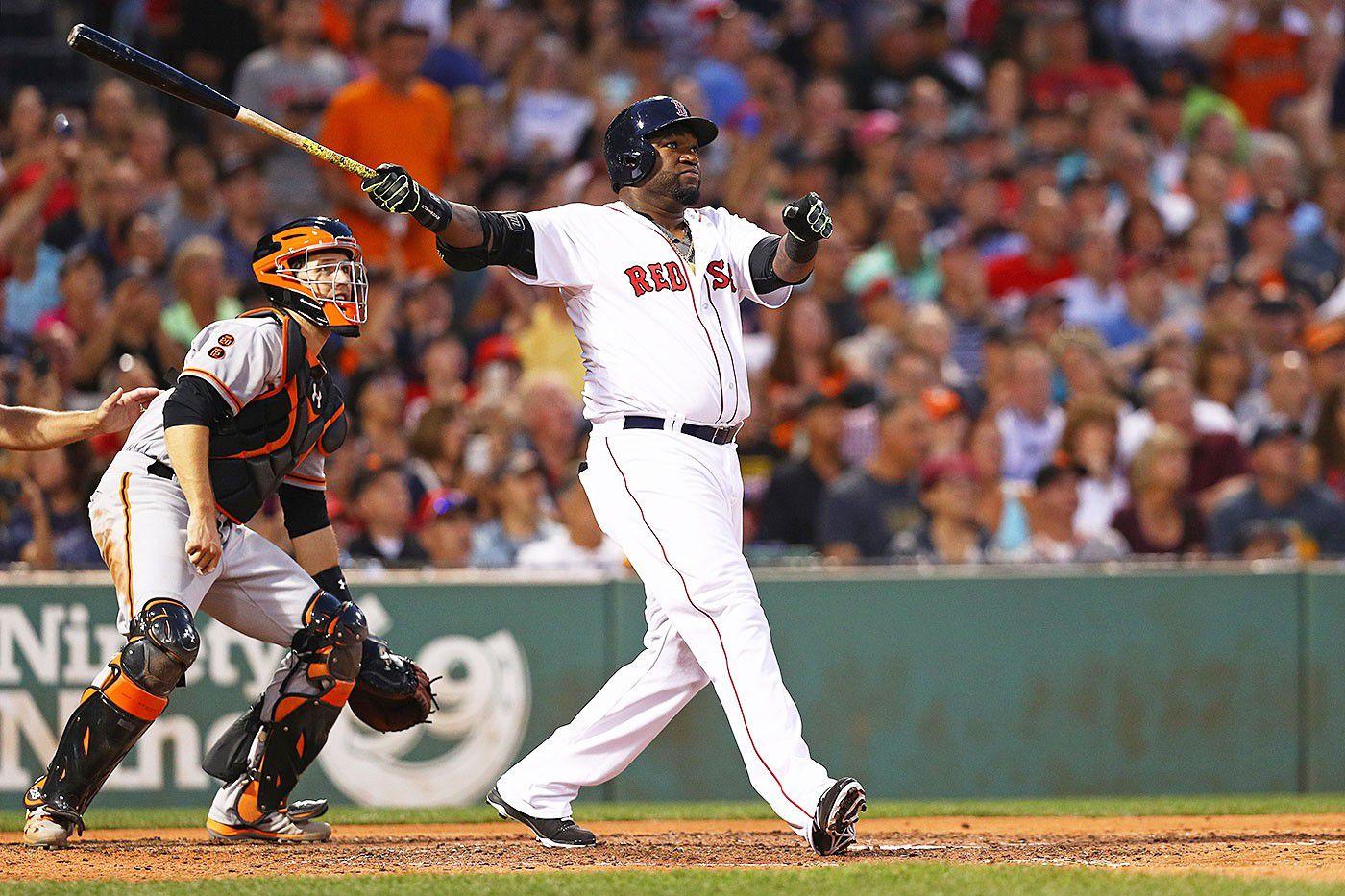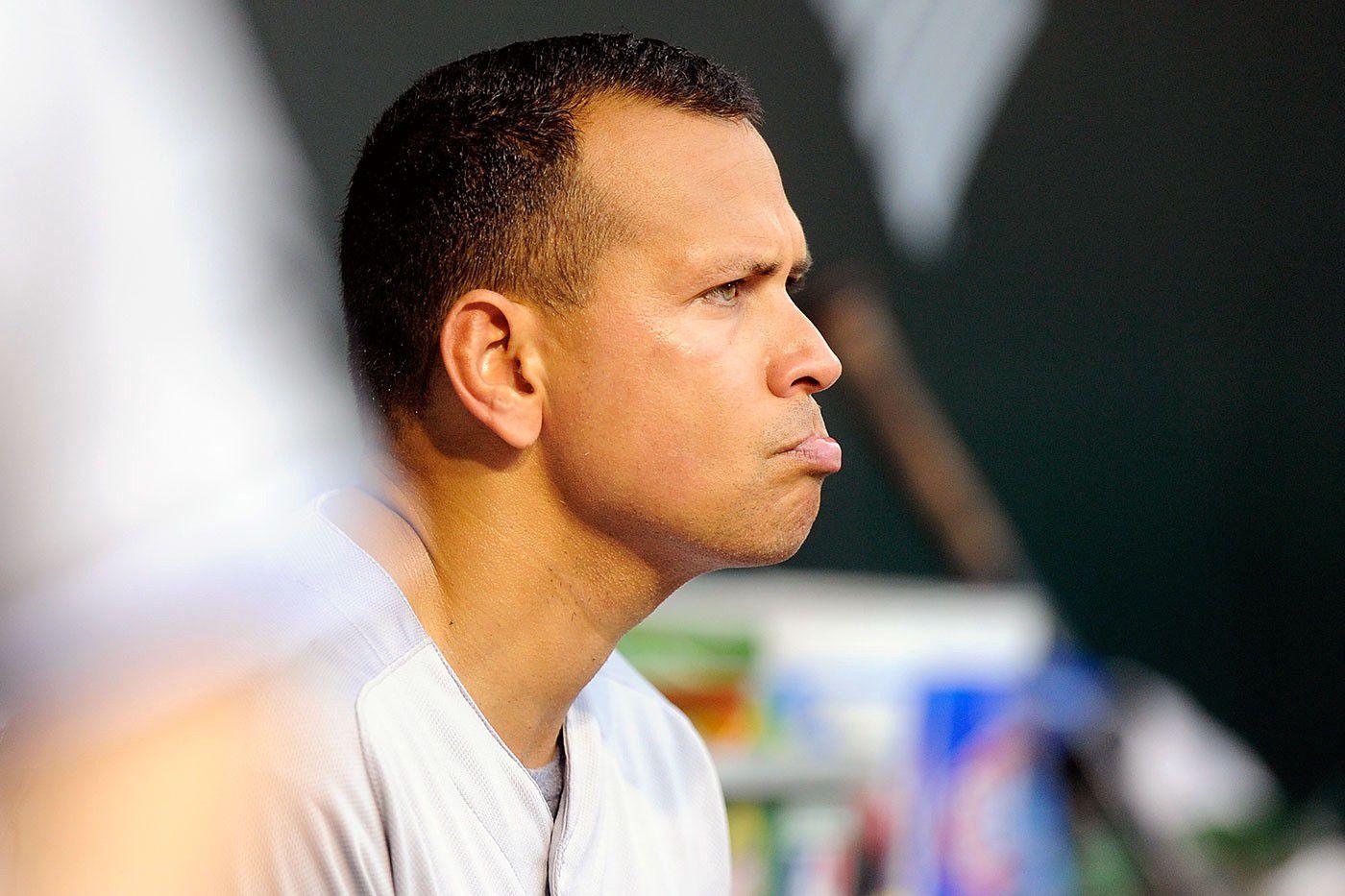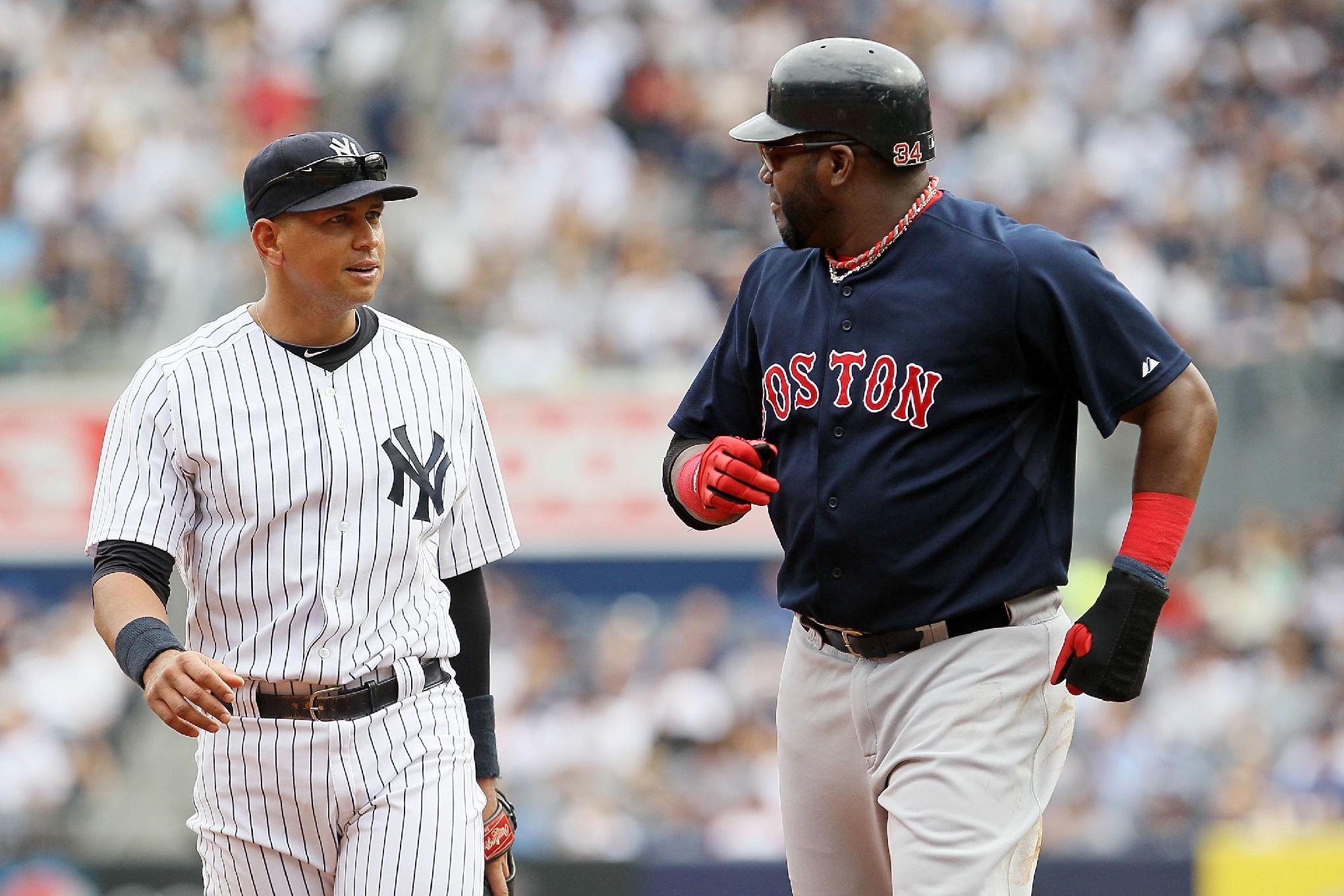On Sunday, David Ortiz and Alex Rodriguez rested. The owner’s manual for 40-year-old DHs instructs teams to spare them from afternoon starts in sweltering heat, so as temperatures spiked, the veterans complied with procedure. While they watched from the dugout and tried not to tweak any muscles, their teams won without them.
That’s where the similarities between their respective seasons end. Rodriguez sat on Saturday, too, while Ortiz went 3-for-3 with a walk and a sac fly against the Twins. And A-Rod remained out of the lineup (against a lefty) Monday night in Houston, while Ortiz went 1-for-5 in a loss to the Tigers at Fenway. Big Papi’s benching on Sunday was strategic, meant to maximize the amount of Ortiz that Boston could expect for the stretch run. A-Rod’s benching was the kind you might remember from your own traumatic sports memories: Thanks for coming, kid, but we know you’re not up to the task.
Over his 20-year career, Ortiz has been 40 percent better than the league-average hitter. Rodriguez, in his 22 seasons, has him beat by one percentage point. You wouldn’t know that now, though, when anyone looking at a leaderboard would be hard-pressed to pick two players with a greater gap in performance. Ortiz, improbably, is at the peak of his powers as he closes out his career, checking both boxes on the traditional wish list of ways to go out: on top, and on his own terms. Rodriguez, too, is playing like a teenager again — in his case, the one who posted a combined on-base percentage below .260 for the 1994–95 Mariners. He’s taking an alternate path to retirement, one paved with hamstring strains, problems picking up pitches, and empty out-of-zone swings.

Only Ted Williams produced more per plate appearance in a final season than Ortiz has to date, and the 41-year-old Williams made just 390 trips to the plate in 1960. Ortiz, who’s batting .330/.420/.664 and leading the AL in both slugging percentage and intentional walks, will top that total this week. Barring an injury (or, as Red Sox fans hope, a change of heart), he’ll finish with the second-highest offensive WAR of any player in a final season, trailing only Shoeless Joe Jackson’s 7.4 mark from 1920, and Jackson’s career didn’t die of natural causes. Rodriguez, meanwhile, has been one of the least valuable big leaguers, prevented from doing additional damage by his recent reduction to a part-time role. Despite sitting regularly against right-handers, Rodriguez has reached base at a .256 clip, seventh worst in baseball among players with at least 200 plate appearances. Ortiz would have to make 247 consecutive outs for his OBP to sink to the same level.
We’re watching two hitters who’ve been among the best in their sport take the least-alike last licks imaginable. The Red Sox are openly wondering what they’ll do without Ortiz, who seems indispensable. The Yankees, rumors say, can’t wait to release Rodriguez, a part-time DH who doesn’t hit. And because the two farewell tours — one pre-planned and joyous, one unofficial and forced — are playing out in the same season, we can’t process one without filtering it through our awareness of the other. Seeing Rodriguez struggle makes us marvel all the more at Ortiz’s stats. And watching Ortiz raise his game at such a late stage makes us wonder, not for the first time, why some athletes grow old overnight while others never lose their mojo.

Although the two sluggers’ careers are winding down differently, they started in almost the same place. Ortiz, a native of the Dominican Republic, was signed at 17 by Seattle in 1992; Rodriguez, a New York native of Dominican descent, was drafted by Seattle six months later. Since then, they’ve put up Cooperstown-caliber stat lines, been tainted by PED scandals to varying degrees and, despite a few false endings, stuck around long enough to rank first and second, respectively, on the list of major leaguers with the longest tenures on their current teams.
While some PED crusaders complain that Ortiz has unjustly escaped most of the steroid stigma that surrounds A-Rod, lumping the two together would be just as unfair to Ortiz. Big Papi’s likability gets him out of some scrutiny, but the evidence against him also isn’t as strong as it is against Rodriguez. Even if Ortiz’s leaked positive test from 2003 (for an unspecified substance) reflected a real violation, and even if the substance was something he meant to take, you’d have to be a Sith on the steroids issue not to draw a distinction between the two players’ known PED pasts. At worst, Ortiz was using at a time when PEDs were widespread, MLB’s disciplinary program wasn’t in place, and he hadn’t broken through either on the field or financially. Rodriguez’s most recent infractions (and attempts to conceal them) came after his career earnings were enormous and the consequences were clear.
It’s always easier to contrast A-Rod and Ortiz than to compare them. In the summer of 1996, when A-Rod was in the midst of the best-ever age-20 season (prior to Mike Trout’s in 2012), the Mariners traded Ortiz to Minnesota as a player to be named later (literally). In December 2000, A-Rod signed the richest contract in sports; two years later, the Twins dumped Ortiz. Even now, A-Rod has the higher salary. Ortiz has always been the more sympathetic figure: an unlikely late bloomer instead of a teen prodigy; a member of the Red Sox instead of the Yankees; the perceived postseason GOAT instead of the perceived postseason goat. He’s authentic and profane as opposed to artificial and polished — widely beloved rather than widely disliked. And now, Ortiz is almost unsittable, while Rodriguez is almost unstartable.
Ortiz took a strange route to this point. From 2005 to 2010, his age-29 to age-34 seasons, he posted a 144 OPS+ in 863 games; from 2011 to 2016 (ages 35–40), he’s posted a 155 OPS+ in 751 games and counting. That’s not what late-career trajectories tend to look like. By Baseball Prospectus’s True Average metric, only 15 hitters since 1950 have improved from that earlier age range to the later one, while playing at least 600 games in each sample. Only four have improved by more than Ortiz: Barry Bonds, Andrés Galarraga, Darrell Evans, and Brian Downing. The presence of Bonds and Downing on that list does nothing to defuse steroids suspicions, but Ortiz is damned whatever he does: The longer he proves he can perform without testing positive, the more his continued success makes skeptics wonder whether he’s using some substance that circumvents the system.
Yet at times, a younger Ortiz looked just as cooked as the current Rodriguez. In 2009, when Ortiz was 33, he hit .185/.284/.287 through May and took time off to fix his mechanics and clear his head. That June, an anonymous scout, questioning Ortiz’s age, called him (ironically, in retrospect) a “40-year-old man who can’t play anymore.” (Ortiz posted a .903 OPS from that day through the end of the year.) And as recently as last season — last season! — Ortiz looked lost again, taking more time to tinker and flailing his way to a .219/.297/.372 line on June 9. From then on, he hit .304/.395/.660, recording an OPS of almost 1.200 in August as the reinstated Rodriguez, who’d started the 2015 season so strong, cooled off faster than a hot towel in economy class.

Rodriguez didn’t (and still doesn’t) intend for 2016 to be his last season. In March, he announced that he’d walk away after the 2017 campaign, when the massive contract he signed on the heels of his 2007 MVP season will mercifully conclude. Now it looks like a long shot that he’ll last until then. The Yankees owe him $21 million next season whether he’s playing in pinstripes or not, but they won’t want to use a roster spot on a hitter who makes them worse, or swallow the additional cost they’d incur if he limped to 18 more homers, tying Babe Ruth at 714 on the all-time list. One franchise has already paid an absurd sum of money to get rid of Rodriguez, so unless he hits for the rest of this season, his best hope for continued major league life may be if the Yankees release him and a rebuilding team invites him to audition for a Jason Giambi–esque, mentor-type role. Then again, both A-Rod and Ortiz have looked done and rebounded before.

A decade ago, no one would have believed that Ortiz’s Hall of Fame odds would blow by A-Rod’s by the time the two retired. All told, the well-rounded Rodriguez provided more than five times the value that Ortiz did before both turned 30. But Ortiz has been the better player since reaching that age, edging out A-Rod by roughly one win, according to Baseball-Reference’s WAR. His belated breakout, coupled with A-Rod’s sins, has made him the one tipping his cap across the country and getting the deferential Cal Ripken treatment at the All-Star Game. A-Rod, who originated the Ripken treatment, has forfeited his right to experience that type of send-off. To hear Ortiz tell it, though, farewell tours are overrated anyway.
We may never know exactly which hormones or supplements Ortiz and A-Rod took, or when they took them, or how well they worked. But that needn’t spoil the drama of what we’re currently witnessing. In Ortiz, we have a long-overlooked player raised at last to league-leading heights, making up for his subpar production at the ages when most players peak. And in Rodriguez, who’s running on fumes, we have the preternaturally talented player stripped of his skills, muddling along and looking more mortal than ever. For now, they’re showing us two wildly different versions of what 40-year-old legends can look like. But they won’t even have age in common much longer; on Wednesday, A-Rod turns 41.


